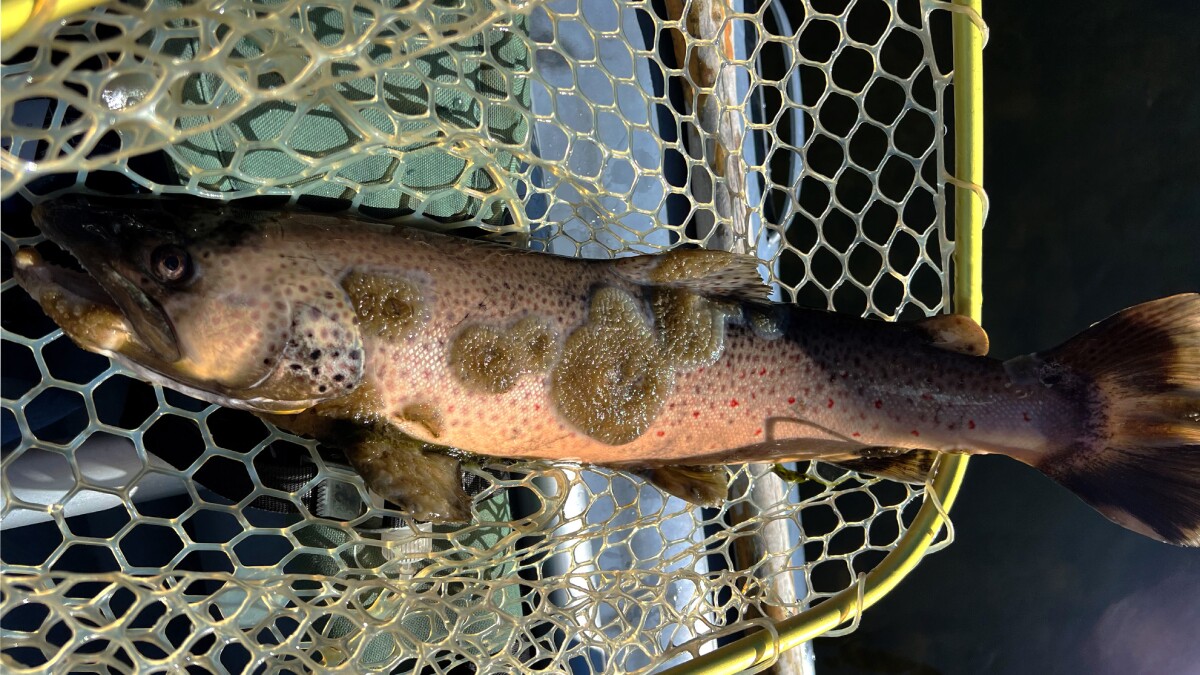
Zombie Trout Montana sounds like something out of a horror movie, right? But these fish are very real and have a story that's both eerie and fascinating. Found in the pristine waters of Montana, these trout have a unique condition that makes them appear lifeless even when they're still swimming. What causes this strange phenomenon? It's a mix of environmental factors and diseases that affect their behavior and appearance. Anglers and nature enthusiasts alike are intrigued by these mysterious creatures. Ready to dive into the world of Zombie Trout and uncover the secrets behind their haunting existence? Let's get started!
Key Takeaways:
- Zombie Trout in Montana are rainbow trout infected with a parasitic worm, causing a condition known as whirling disease. This affects their behavior and has significant impacts on the ecosystem.
- Efforts to combat whirling disease include biosecurity measures, genetic research, public awareness campaigns, and fishing regulations. Collaboration is crucial for the future survival of these unique fish.
What Are Zombie Trout?
Zombie Trout in Montana are a fascinating phenomenon. These fish are not your typical trout; they have unique characteristics that make them stand out. Let's dive into some intriguing facts about these unusual creatures.
- Zombie Trout are actually rainbow trout infected with a parasitic worm called Myxobolus cerebralis.
- This parasite causes a condition known as whirling disease, which affects the fish's nervous system.
- Infected trout exhibit erratic swimming patterns, often swimming in circles, hence the name "whirling disease."
- The disease can be fatal, but some trout survive and continue to live with the parasite, earning them the nickname "Zombie Trout."
- Whirling disease was first discovered in Europe but has since spread to North America, including Montana.
How Do Zombie Trout Get Infected?
Understanding how these trout become infected can help in managing and preventing the spread of the disease.
- The life cycle of Myxobolus cerebralis involves two hosts: the trout and a small aquatic worm called Tubifex.
- When trout consume Tubifex worms infected with the parasite, they become infected themselves.
- The parasite then migrates to the trout's cartilage and nervous system, causing the symptoms of whirling disease.
- Infected trout release spores into the water, which are then consumed by Tubifex worms, continuing the cycle.
- The disease is most commonly spread in areas with high densities of Tubifex worms and trout, such as fish hatcheries.
Impact on Montana's Ecosystem
Zombie Trout have significant effects on Montana's aquatic ecosystems. Here are some key points to consider.
- Whirling disease can lead to high mortality rates in young trout, reducing their populations.
- This decline in trout populations can affect the entire food web, as trout are a key species in many aquatic ecosystems.
- The disease can also impact recreational fishing, which is an important industry in Montana.
- Efforts to control the spread of whirling disease include monitoring fish populations and managing infected areas.
- Some fish hatcheries have implemented measures to reduce the risk of infection, such as using parasite-free water sources.
Can Zombie Trout Recover?
While whirling disease is often fatal, some trout do manage to survive and adapt.
- Some infected trout develop a partial immunity to the parasite, allowing them to live longer.
- These survivors can still reproduce, passing on their genes to the next generation.
- Research is ongoing to understand how some trout are able to survive and whether this resistance can be bred into future populations.
- In some cases, infected trout can recover enough to return to normal swimming patterns, although they may still carry the parasite.
- Conservation efforts are focused on preserving these resilient individuals to help maintain healthy trout populations.
Interesting Facts About Zombie Trout Behavior
Zombie Trout exhibit some unique behaviors that set them apart from their healthy counterparts.
- Infected trout often display unusual swimming patterns, such as swimming in tight circles or spirals.
- They may also exhibit a lack of coordination, making them more vulnerable to predators.
- Despite their erratic behavior, some infected trout can still feed and grow, albeit at a slower rate.
- Zombie Trout are often found in slower-moving waters, where they are less likely to be swept away by currents.
- Their unusual behavior can make them easier to spot, which has led to increased interest from researchers and anglers alike.
Efforts to Combat Whirling Disease
Various strategies are being employed to manage and reduce the impact of whirling disease on trout populations.
- Fish hatcheries are implementing biosecurity measures to prevent the introduction of the parasite.
- Researchers are studying the genetics of resistant trout to develop strains that are less susceptible to the disease.
- Public awareness campaigns are educating anglers about the importance of cleaning their gear to prevent the spread of the parasite.
- Some areas have implemented fishing regulations to reduce the risk of spreading the disease, such as catch-and-release policies.
- Ongoing monitoring of trout populations helps to identify and manage outbreaks of whirling disease.
The Future of Zombie Trout in Montana
The future of Zombie Trout in Montana depends on continued research and conservation efforts.
- Advances in genetic research may lead to the development of trout strains that are resistant to whirling disease.
- Improved management practices in fish hatcheries and wild populations can help reduce the spread of the parasite.
- Collaboration between scientists, anglers, and conservationists is key to protecting Montana's trout populations.
- With continued efforts, it is possible to mitigate the impact of whirling disease and ensure the survival of these unique and fascinating fish.
Final Thoughts on Zombie Trout in Montana
Zombie trout in Montana are a fascinating phenomenon. These fish, affected by whirling disease, exhibit strange behaviors and physical deformities. This disease, caused by a parasite, disrupts their nervous systems, leading to erratic swimming and a twisted spine. Despite their eerie appearance, these trout play a crucial role in understanding aquatic ecosystems and the impact of diseases on wildlife.
Montana's efforts to manage and study zombie trout provide valuable insights into preserving healthy fish populations. By monitoring these fish, scientists can develop strategies to combat whirling disease and protect native trout species. Anglers and nature enthusiasts can also contribute by reporting sightings and supporting conservation initiatives.
Zombie trout remind us of the delicate balance within ecosystems and the importance of ongoing research and conservation efforts. Next time you're in Montana, keep an eye out for these unique fish and appreciate the mysteries they bring to our waters.
Frequently Asked Questions
Was this page helpful?
Our commitment to delivering trustworthy and engaging content is at the heart of what we do. Each fact on our site is contributed by real users like you, bringing a wealth of diverse insights and information. To ensure the highest standards of accuracy and reliability, our dedicated editors meticulously review each submission. This process guarantees that the facts we share are not only fascinating but also credible. Trust in our commitment to quality and authenticity as you explore and learn with us.


